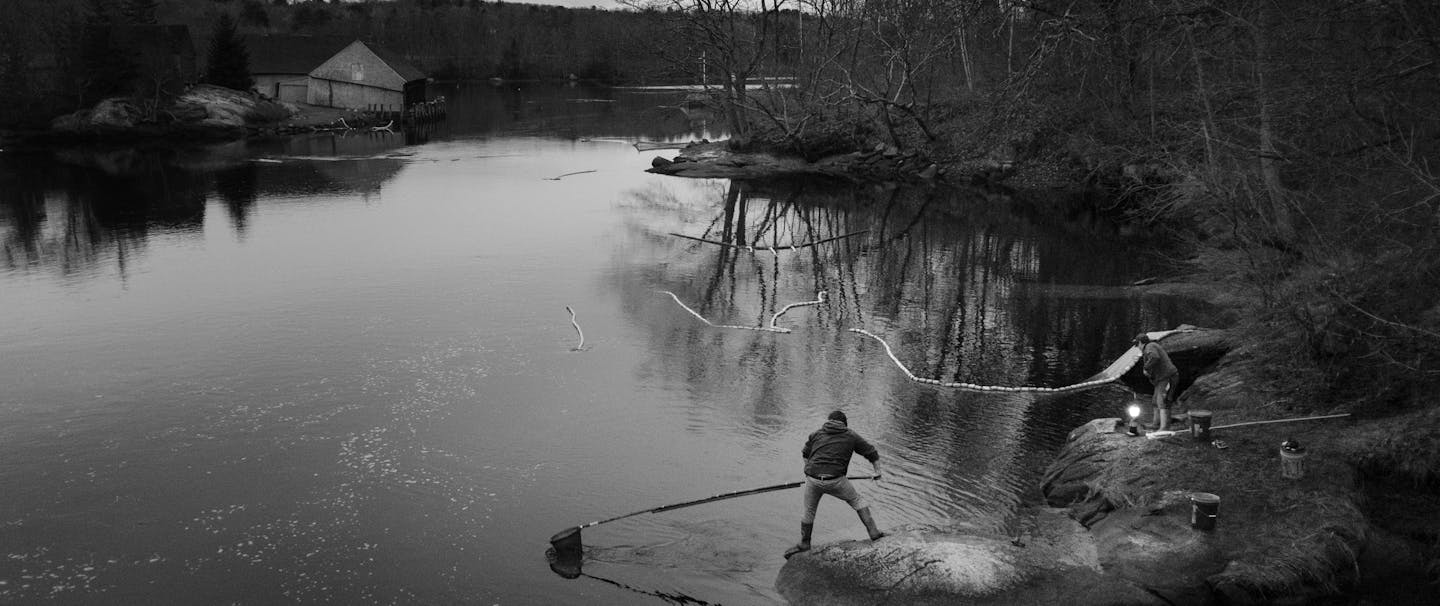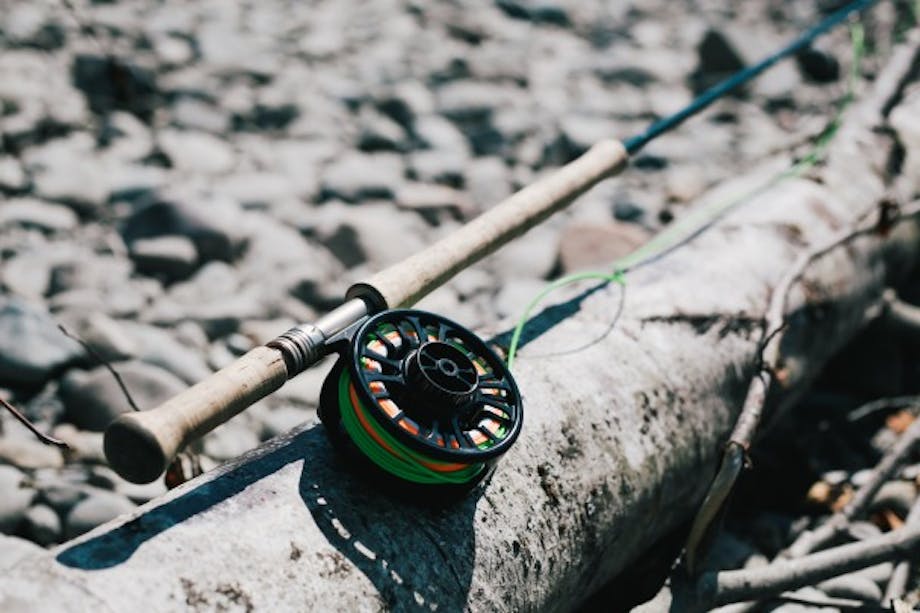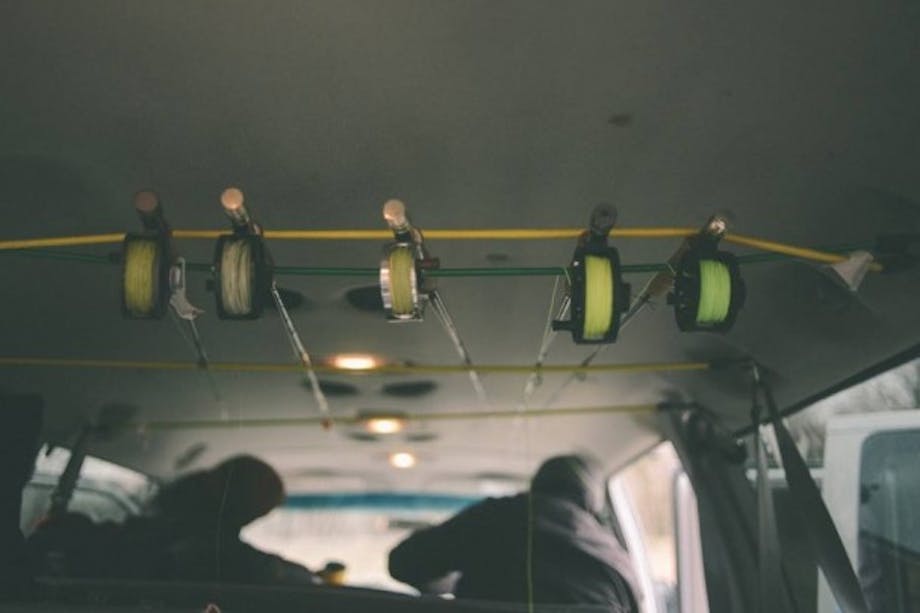I live on a peninsula on the coast of Maine, between two tidal rivers that run out to the ocean. The rivers are still and quiet in the summer, frozen in the winter, wild in the spring. They follow a path through straits and narrows, bays and coves, always flowing toward saltwater.
April is a liminal month in Maine, caught between winter’s hold and spring’s promise. The elvers reach the rivers in early spring, often with snow still on the ground, and begin fighting that same current on their own journey home, swimming upstream to spawn, leaving the salt behind.
Elvers are baby eels— known as glass eels because they are transparent and about three inches long. For Anguilla rostrata, the American eel, life begins and ends in the Sargasso Sea. When they reach the rivers they avoid sunlight, as it makes them easy prey for herons, eagles, and bigger fish.
The fishermen work in the dark, when the incoming tide is just right. The water is frigid, the banks are slippery, and the river bottom is treacherous.
During the day you can see the fyke nets hanging from rocks and bridges, moored to trees along the river edge. Depending on the tide, the nets may be hanging like shrouds or ethereal veils floating beneath the surface. You might see fishermen arriving at dusk with their dipnets and a lantern.
For those lucky ones who have gotten a license to fish elvers through a lottery system, a good catch can make a real difference. With an average price well over $2,000 a pound and a quota of just under 10,000 pounds, it can turn things around.
With the waters warming each year, the lobsters have already started to move north. We don’t know what will happen to the elver population. Time will tell.
I am a fisherman’s daughter, and my photographs are the blood knot between us.




